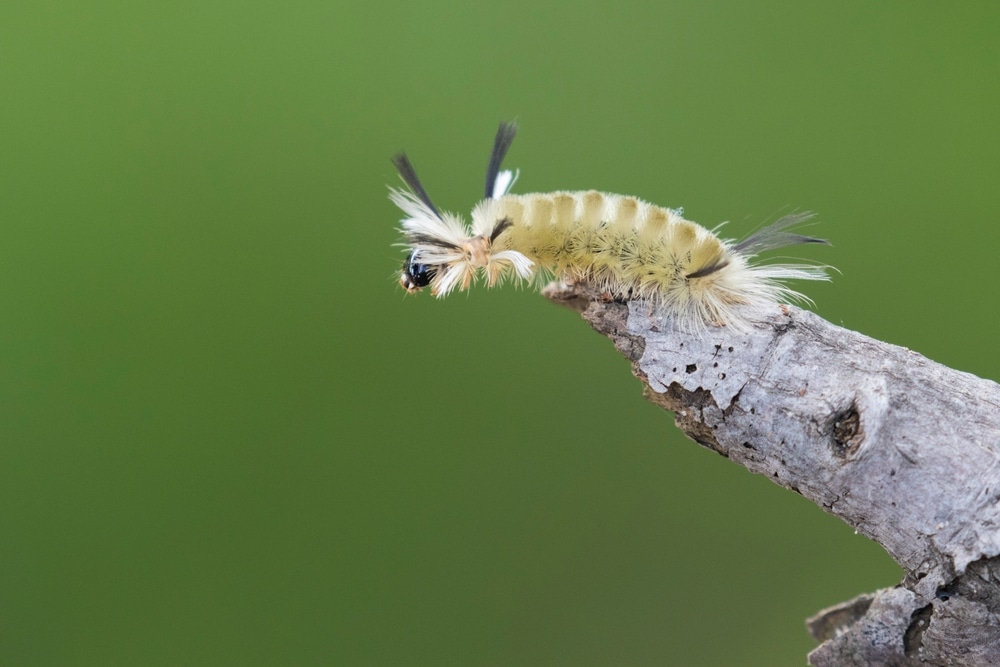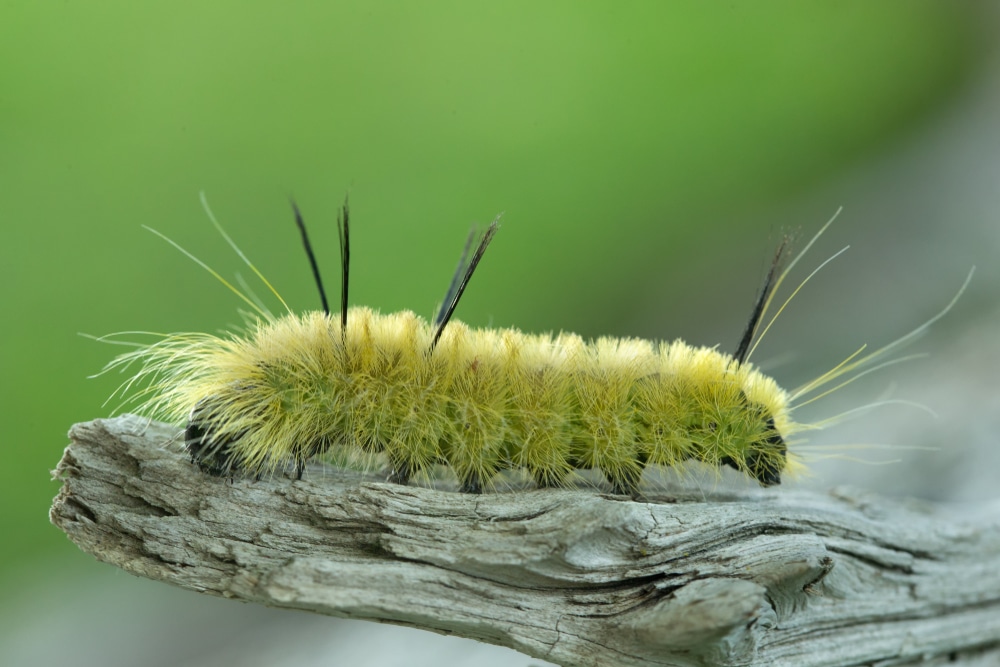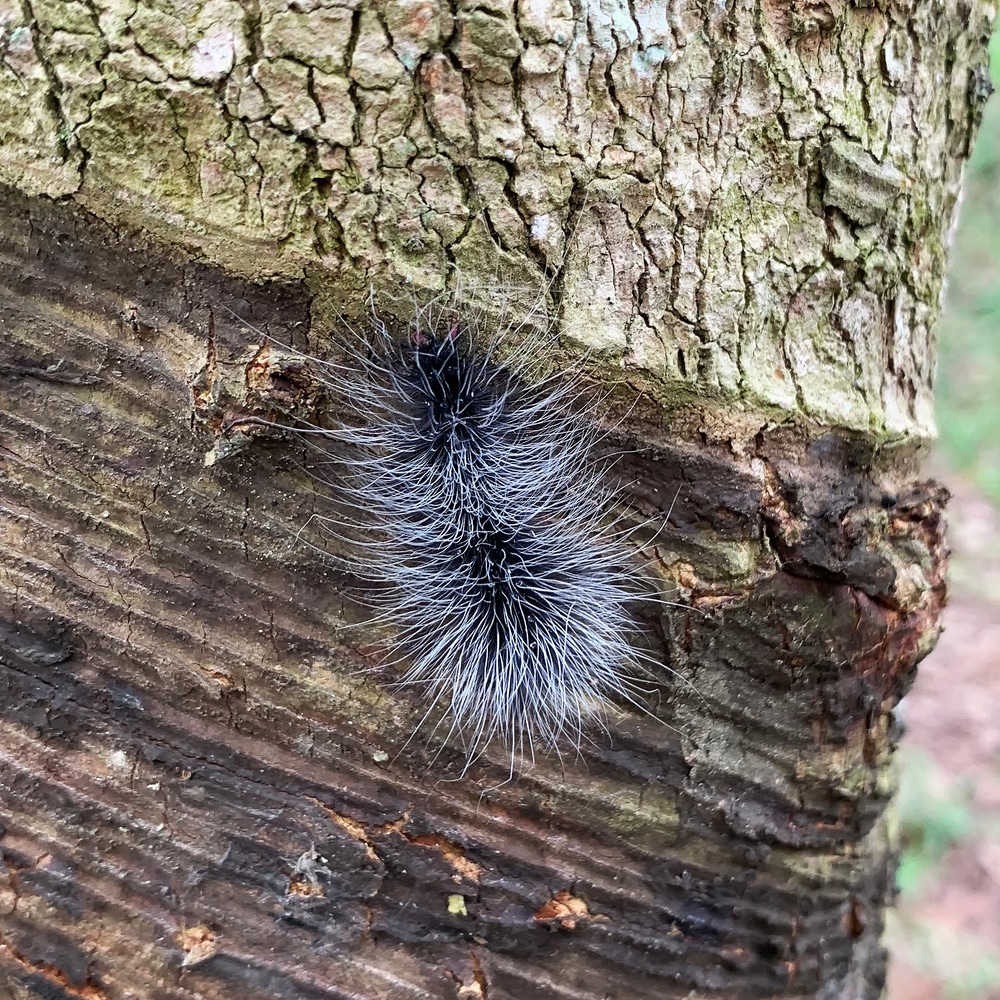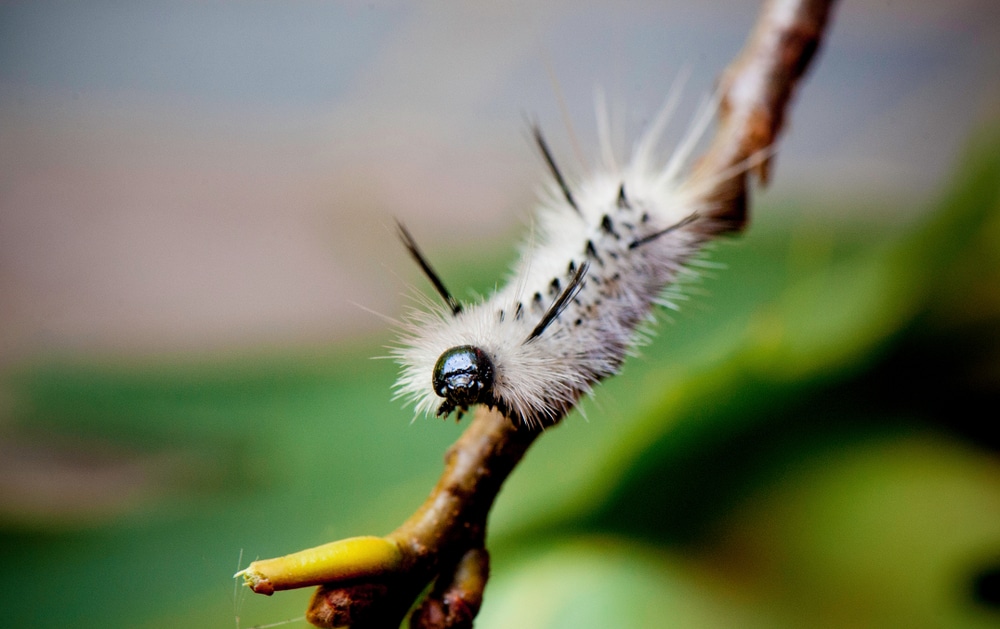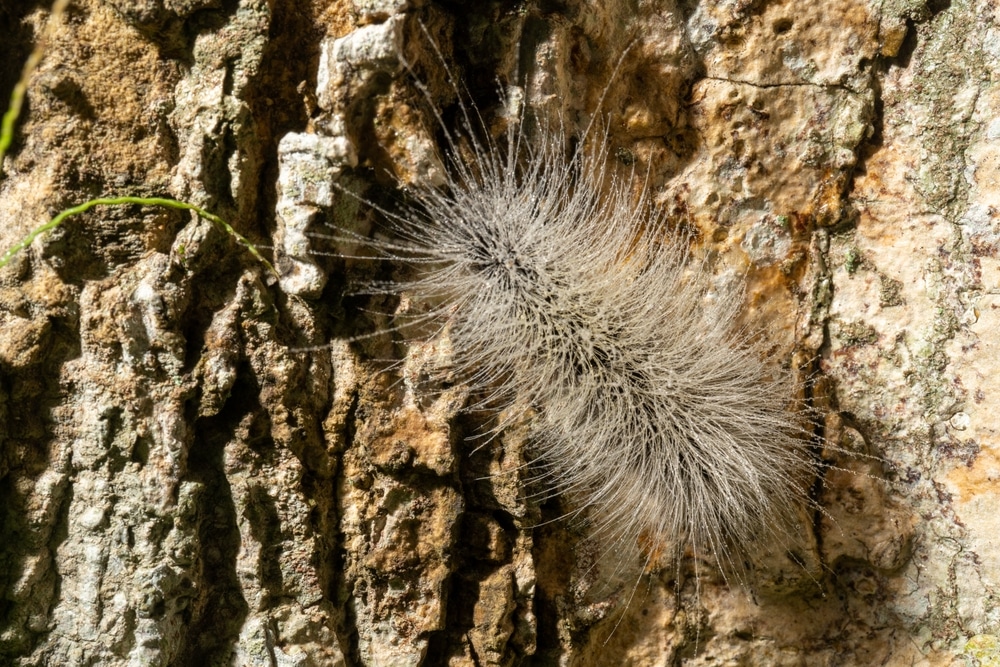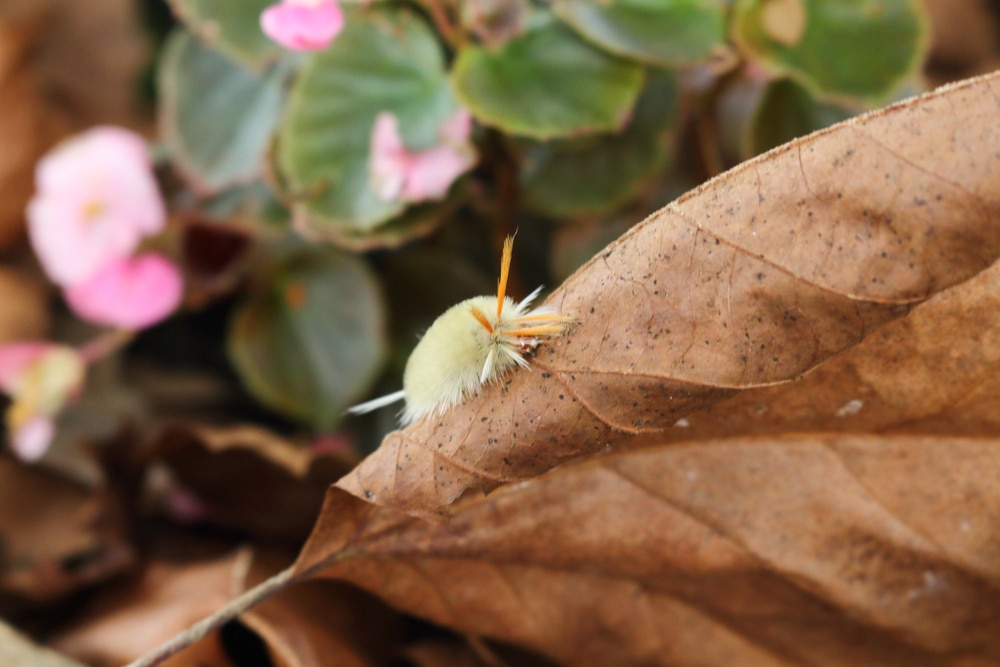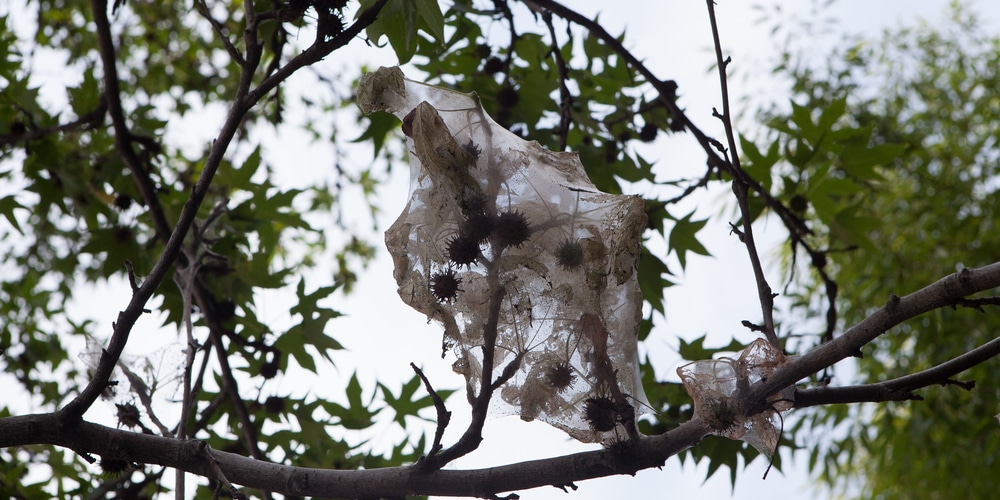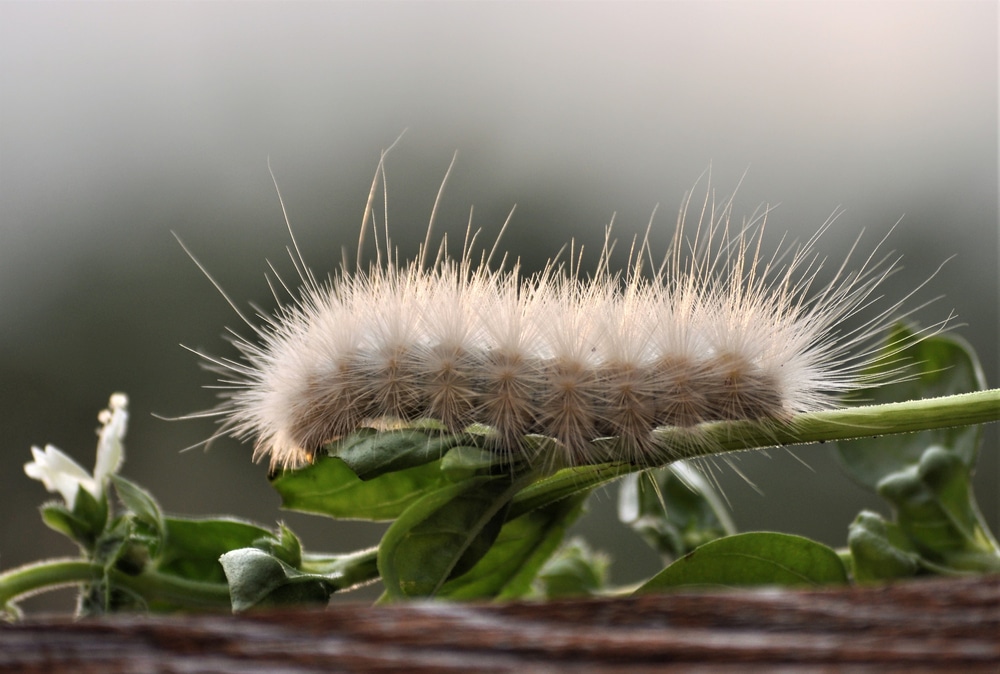Have you recently seen a wooly white caterpillar in your yard or garden but don’t know what it is? More importantly, is the white wooly insect a pest or a beneficial specimen?
Wooly white caterpillar
Let’s take a look at the 9 most common wooly white caterpillars around and how to identify them.
Spotted Apatelodes Caterpillar
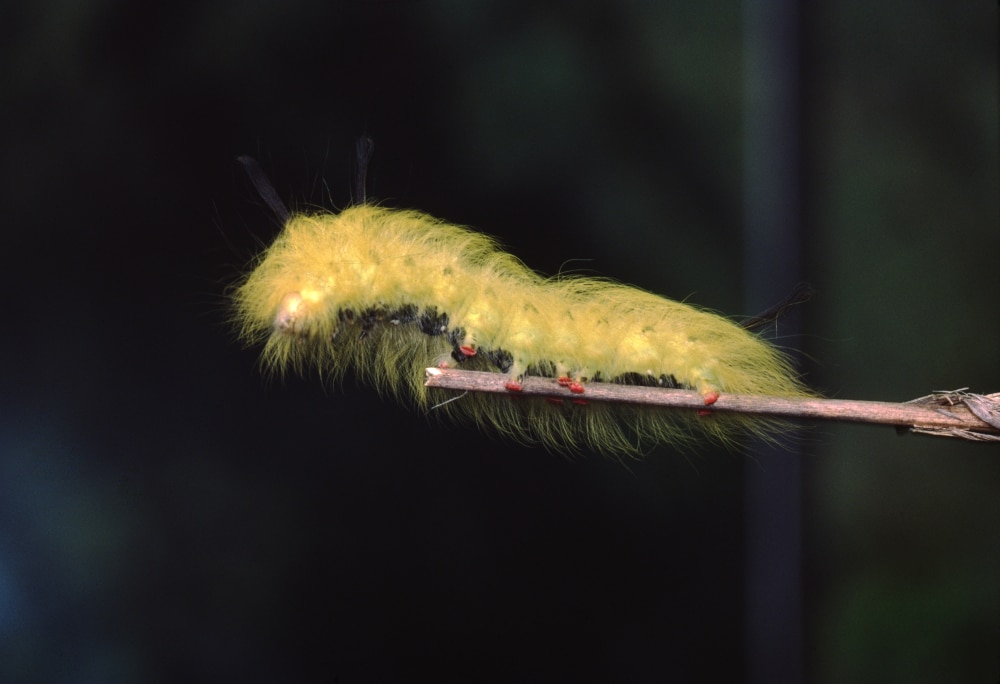
A color-changing wooly caterpillar, the Apatelodes torrefacta is brilliant white in its early stages and gradually turns bright yellow as it ages. Specific markers for the Spotted Apatelodes caterpillar include black-gray spines on its head and body.
Spotted apatelodes are often found on oak, ash, and maple trees. They do not sting and are usually between 20 to 45 millimeters long.
Banded Tussock Moth
A wooly caterpillar that usually appears late summer through fall, the Halysidota tessellaris only has a single generation that arrives in July. They’re found in the deciduous trees and shrubs of Michigan and sometimes extend beyond its borders.
The Banded Tussock Moth eats foliage on shrubs and trees and can easily be found on the upper surface. The larvae can be identified by unique color patterns but they’re mostly white or light yellow.
American Dagger Moth
Acronicta americana is a distinctive wooly white caterpillar, with fine white hairs and a pair of jet-black tufts at the middle and the tail end. The larva is not particularly venomous, although it will cause significant skin irritation when touched.
You’ll find the American Dagger Moth in woodlands and deciduous forests. They can grow up to two inches in length and typically hang on the tip of the leaves and under them.
Rubber Tree Caterpillar
A common pest of Ficus plants, the rubber tree caterpillar has a spiny white or creamy yellow body, and a bright red head with white a black and white mouth. The tufts on its head are light orange.
A voracious eater, the rubber tree caterpillar can go through leaves at a time and cause holes in the foliage. After having its fill, the caterpillar turns into the Edwards’ wasp moth.
Hickory Tussock Moth
The Hickory Tussock Moth has a cute nickname, the White Woolly, with spines that are either pure white or brown with white tips and take on the appearance of a fuzzy caterpillar.
You can usually find the caterpillar on ash, maple, oak, and walnut leaves. Touching them is not recommended as it causes skin irritation or a rash that will stay for a few days.
Woolly Bear or Woolly Worm Caterpillar
The Woolly Bear usually does two generations per year, with a fall infestation being more pronounced. These caterpillars will usually spend most of their time hiding under plant debris such as leaves during winter, which then becomes a snacking spot when spring comes around.
The Pyrrharctia isabella has a two-inch length and takes on plants such as aster, sunflower, and clover. However, the damage done is minimal and barely noticeable.
Sycamore Tussock Moth
A downy white caterpillar with two long and thick tufts on opposite ends, the Sycamore Tussock Moth can measure anywhere between 25 to 35 millimeters long. The moth species tend to cause defoliation damage in sycamore trees and enters its final stage as a blue-winged moth.
Touching this wooly white caterpillar is not recommended since it can cause skin irritation. Look out for its orange pencil hairs that are visible in the green foliage.
Fall Webworm
A thin, segmented-looking caterpillar that spins tent-like webs, the Fall Webworm has longer tufts of white hair than the average woolly worm and a dark red or black head depending on the environment.
It’s worth noting that Hyphantria cunea is a destructive caterpillar species, and it can cause significant defoliation in trees and shrubs. After the pupa stage, fall webworms turn into white moths with black markings.
Virginian Tiger Moth
A white woolly caterpillar through and through, the Virginian tiger moth spots white or light tan hairs all around its body. It’s spikier than the woolly bear or white worm, and it won’t appear as a caterpillar at first glance until you see them crawling.
The Virginian Tiger Moth can be a tan white or creamy white in color and reach a 44-millimeter length. This insect usually appears in the summer season to eat healthy green leaves.
